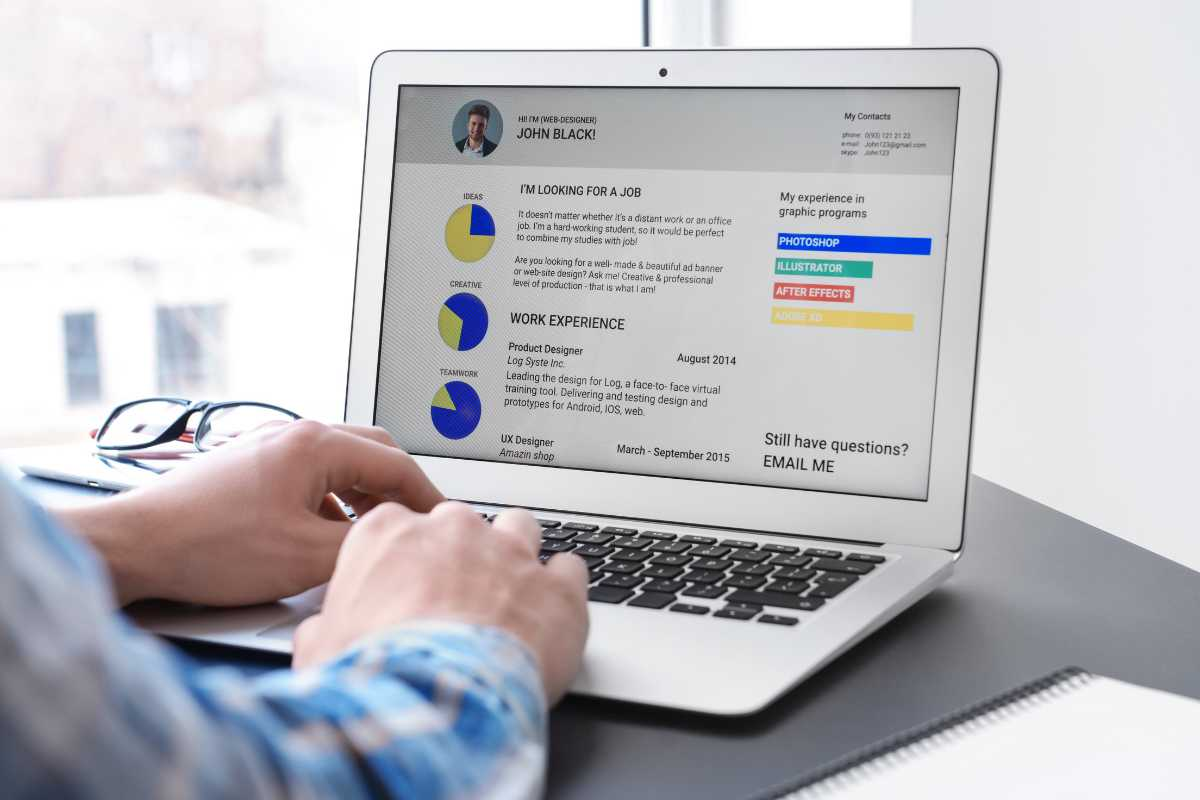
Explore the Top 5 Trends in HR Technology for 2024
As we move into 2024, markets and industries are constantly evolving, and the field of human resources is no exception. Technology is increasingly essential in HR, enabling organizations to manage their workforce more efficiently and effectively. Trends in the HR technology market in 2024 reflect the growing demand for tools and solutions that support recruitment, talent management, employee development, and improving employee engagement and experience. In this article, we look at the latest trends and innovations shaping the future of HR technology trends in 2024 and influencing how organizations attract, engage, and develop their human resources.
What is HR tech?
HR tech, or human resource technology, is a broad term that refers to software and hardware technologies used to automate core tasks performed by HR departments in companies and organizations.
HR technologies are primarily used to improve talent acquisition, employee management skills, data mine, workforce analysis, performance evaluation, learning and development, and general HR operations. They aim to harness the power of automation, data analytics, artificial intelligence (AI), and machine learning (ML) to optimize HR processes, increase employee engagement, and improve digital transformation or organizational performance.
Undoubtedly, the HR tech industry will continue to evolve rapidly in 2024, making significant progress in several key areas. According to a report by Fortune Business Insights, this market is projected to experience a substantial surge, with an estimated value of $39.90 billion by 2029, exhibiting a remarkable compound annual growth rate (CAGR) of 7.5%. This surge reflects the increasing demand for advanced HR technologies and solutions across industries.
How is technology used in HR teams?
HR tech plays a crucial role in the modern world, revolutionizing how HR functions are managed and executed – from recruiting new employees and onboarding to maintaining HR records or enhancing employer branding.
Using advanced tools and software, HR professionals can streamline processes, increase efficiency and provide a seamless service to employees.

Here are some key areas where HR leaders are using technology
1. Recruitment and talent acquisition
HR leaders rely on technology to effectively attract and acquire top talent. Applicant tracking systems (ATS) automate job posting, resume screening, and candidate vetting, thereby streamlining the day-to-day workflow of recruiters.
In addition, AI-based tools can assess candidate skills, conduct video interviews and predict candidate fit based on data analysis. These technologies save time, improve candidate sourcing and ensure a fair and unbiased recruitment process.
Example: HR professionals can use platforms such as Greenhouse, Workable, or Lever to streamline recruitment efforts. These tools provide end-to-end solutions, from job posting to candidate deployment.
Benefits: Faster recruitment process, better matching of candidate profiles to a given offer, reduced administrative burden, and a better experience for future employees.
[Learn also: How to start a staffing agency]
2. Employee deployment and training
HR tech solutions also simplify and streamline the processes of deploying and training new employees. HR leaders can use learning management systems (LMS) to deliver interactive online training modules, track employee progress and provide self-learning opportunities.
Additionally, virtual reality (VR) and augmented reality (AR) can also be used to create immersive training experiences or streamline the onboarding process for those who work remotely. Furthermore, digital HR platforms can automate the paperwork involved in onboarding employees, making the process more efficient and reducing the number of mistakes made manually.
Example: HR professionals can use platforms such as TalentLMS, Cornerstone OnDemand, or SAP Litmos to seamlessly onboard and train employees.
Benefits: Standardized onboarding, personalized training experiences, increased worker engagement, and reduced training costs.
3. Performance management and feedback
HR tech facilitates continuous monitoring and evaluation of employee performance. This is because performance management software supports HR leaders in setting goals, tracking progress, and effectively conducting performance reviews.
This type of HR tech software allows for seamless real-time information sharing and mutual recognition. In addition, data analysis tools can provide insight into performance trends and identify areas for improvement.
Example: Performance management tools such as 15Five, SuccessFactors, or BambooHR can help HR professionals effectively manage performance and support HR administration, payroll, benefits administration, and employee development more broadly.
Benefits: Transparent performance reviews, improved feedback and coaching, increased employee motivation, people analytics, and data-driven decision-making.
4. Employee engagement and communication
HR tech also promotes better employee engagement and positively impacts improving organizational communication. Collaboration platforms like Slack or Microsoft Teams enable seamless communication and collaboration between teams or departments – including those worldwide.
Example: HR teams can use mentioned tools to assist employees in facilitating effective communication and increase workers’ engagement. They connect non-desk workers to people, systems, tools, and information.
Benefits: Better internal communication, seamless collaboration, increased employee satisfaction, and better alignment with organizational goals.

5. Data analysis and reporting
Additionally, HR technologies enable HR teams to use data analytics to gain insights into various metrics and trends. HR analytics tools can analyze employee data such as turnover, productivity, employee retention, and training effectiveness. These insights help make better data-driven decisions, identify areas for improvement, and anticipate future HR needs.
Example: HR tech analytics platforms such as Visier, Workday, or Tableau can help HR teams harness the power of data and generate interactive reports.
Benefits: Informed decision-making, proactive workforce planning, workforce analytics, improved HR strategy, and optimized resource allocation.
Key statistics on HR technology in 2024
- 89% of HR leaders plan to increase or maintain HR technology budgets in 2024.
- Technology is the highest-growing part of the HR budget, with an average increase of 17% from 2023 to 2024.
- 76% of HR leaders say their managers are overwhelmed by the growth of their job responsibilities, and 73% say their leaders and managers are not equipped to lead change.
- 41% of HR leaders say employees’ connection to culture is compromised by hybrid work.
- 64% of HR leaders say they are using or planning to use AI in talent acquisition, 58% in learning and development, and 53% in performance management.
Source: Gartner
HR technology trends for 2024
1. Artificial intelligence and machine learning in human resources technology
According to the IEEE Global Study, three critical technological changes expected in 2024 will be artificial intelligence and machine learning (21%), cloud computing (20%), and 5G (17%).
Driving business growth, as many as 66% of global business leaders and analysts agree that AI will drive most innovation in almost every industry in the next 1-5 years. AI and ML will enable HR managers to streamline their work and increase overall productivity in 2024. By leveraging these technologies, companies can unlock new levels of productivity and efficiency.
Looking ahead, integrating AI and ML into our daily lives will continue to shape how we work, interact, and innovate. As we embrace the possibilities offered by these transformative technologies, the future holds immense potential for organizations and individuals alike. By harnessing the power of AI and ML, software engineering, businesses can stay at the forefront of innovation and create a competitive edge in the dynamic landscape of 2024 and beyond.
Examples:
- AI-powered resume screening algorithms can analyze large volumes of resumes quickly and accurately, identifying top candidates based on predefined criteria.
- ML algorithms can assess historical hiring data to predict the success of future candidates, helping HR teams make data-driven hiring decisions
- AI-driven onboarding platforms can provide personalized onboarding experiences to new hires, offering relevant resources and training materials based on their roles and skillsets.
2. Technologies to support hybrid work
In 2024, expect to see changes in traditional recruitment models. There will be a significant unleashing of the power of communities and democratization of recruitment processes.
According to the data, more than 50 million people are registered on platforms offering GIG jobs, i.e., flexibly, with much autonomy in work performed. There is a massive shift from traditional and full-time positions to hybrid employment and freelancing, independent contracts, and part-time jobs.
In 2024, we will notice an active exit of job candidates into the market in search not only for better income sources but also additional income-generating activities. In the face of a post-Covid economy and a drastic drop in the purchasing value of money, there will be more giggers and people appreciating hybrid work than ever. It is estimated that 1 in 6 workers in traditional professions want to try freelance work, and in the U.S., the number of freelancers is expected to reach 86.5 million by 2027.
It takes the right HR technologies to meet their needs. For example:
- Collaboration and Communication Tools enable seamless communication and collaboration among remote and in-office teams. Famous examples are Slack, Microsoft Teams, and Google Workspace. The same Project Management Software such as Asana, Trello, and Jira offers features like task assignment, progress tracking, and deadline management.
- Time and Attendance Tracking Systems: Hybrid work often requires accurate work hours and attendance tracking. Tools like TSheets, Deputy, and BambooHR’s Time Tracking module enable employees to log their working hours, manage time-off requests, and provide real-time visibility to HR teams.
- Virtual Learning and Development Platforms: As remote work and gig work increase, virtual learning platforms like Udemy for Business, LinkedIn Learning, or Coursera for Business allow employees to access online courses, skill development programs, and certifications.
- AI-Enabled Candidate Screening and Hiring Tools: For efficient recruitment processes, AI-powered tools like HireVue, Textio, or Greenhouse automate candidate screening, assess job fit, and help eliminate bias in the hiring process.
- Mobile HR Applications: Mobile apps like ADP Mobile, Zenefits, or BambooHR Mobile allow employees to access HR-related information, submit time-off requests, view pay stubs, and engage with HR processes on the go, regardless of location.

3. Well-being, safety, and support employees
The above trend is closely linked to another important aspect – employee well-being, safety, and support. While the goal of achieving a healthy work-life balance is not new, due to the COVID-19 pandemic, work-life and workplaces have become a constant presence in the homes of many workers. Ensuring a safe and healthy work environment is crucial for maintaining a strong workforce, especially in labor shortages and recruitment challenges.
Examples:
Employee Wellness Platforms: These platforms provide employees access to various well-being programs and resources. They may include fitness challenges, mental health support, meditation apps, nutritional guidance, and employee assistance programs (EAPs).
Wearable Devices: Smartwatches and fitness trackers can help employees monitor their physical activity, sleep patterns, and stress levels. Some companies integrate these mobile devices further into their wellness programs to encourage employees to maintain a healthy lifestyle and track their well-being metrics.
Virtual Health Services: Telemedicine platforms enable employees to access healthcare services remotely. They can have virtual consultations with healthcare providers, receive prescriptions, and access medical advice, which can be particularly helpful for employees in remote locations or those with limited access to healthcare.

4. HR software development
HR software has become a significant trend in the modern workplace – meeting various HR needs.
Among the popular types of HR tech software are:
Human Resource Information Systems (HRIS)
These serve as centralized databases for managing employee information such as personal information, employment history, benefits, and performance records. They streamline administrative tasks, automate payroll and leave management processes, and provide self-service portals for employees to access and update information.
Applicant Tracking Systems (ATS)
ATS software facilitates recruiting and hiring by managing job postings, tracking applicants, and organizing candidate data. These systems often include features such as resume analysis, interview scheduling, and communication tools to streamline the recruitment process.
Performance management systems
Performance management software helps HR teams and managers track employee performance, set goals, conduct performance reviews, and provide feedback.
Learning management systems (LMS)
LMS platforms support employee training and development by providing a centralized hub for creating, delivering, and tracking educational programs. They often offer features such as course creation, content management, assessment tools, and reporting capabilities.
Customized HR software and low-code platforms
In addition to off-the-shelf HR software solutions, customized HR software development has gained popularity. This approach allows organizations to tailor the apps to their unique requirements, workflows, and company culture based on the experience of software developers familiar with the business aspect of HR companies. What’s more – it can resolve the problem of legacy software systems.
Custom HR tech software can be developed by hiring teams of developers.
Apart from that, in order to speed up the software development process, the system can be buily with low-code platforms – like Openkoda – that offer drag-and-drop interfaces and off-the-shelf components. Low-code platforms enable HR professionals with limited coding experience to create custom HR software solutions, reducing dependence on external development resources and costs.

5. Goals management in HR
Managing goals in the HR department using new technologies has become extremely important for organizations in today’s dynamic business environment. Modern technological tools can significantly improve the processes of setting, monitoring, and evaluating employee goals, which translates into effective HR management. In this context, it is vital to use the following:
- Goal management platforms like Performly, BetterWorks, or 7Geese,
- Mobile apps for tracking progress, like GoalsOnTrack or Nozbe,
- Automated assessment systems, like SuccessFactors from SAP or Talentsoft,
- Data analysis and forecasting with the help of Anaplan or Workday,
- Real-time communication and collaboration using Slack or Microsoft Teams.
Introducing new technologies into HR goal management can bring many benefits, such as increased efficiency, streamlined processes, better communication, increased employee motivation, and more precise analysis and evaluation of results. However, the technologies must be appropriately tailored to the specifics of the organization and well integrated with existing HR systems and processes to achieve their full potential.
6. Reskilling and upskilling
The trend toward reskilling and upskilling workers is increasingly recognized as a critical element of human resources (HR) strategies, especially as we move toward 2024.
This is in response to:
- Rapid technological advances: With the rise of automation, artificial intelligence, and other digital technologies, many traditional jobs are being transformed or replaced. This shift requires employees to learn new skills to stay relevant in their fields. HR professionals are focused on identifying the gaps between current employee skills and future needs, and creating strategic plans for development.
- Changing labor markets: The nature of work is changing, with an increase in remote working, gig jobs and flexible roles. This evolution requires a different set of skills, including digital literacy, self-management, and adaptability. HR departments are using online learning platforms and other resources to facilitate continuous education and training.
- Evolving business needs: As companies pivot and adapt to new market conditions, they need employees who can quickly adapt to new roles and responsibilities. This agility is critical for organizations that want to stay competitive. Upskilling and reskilling initiatives are essential to building a workforce that can evolve with business needs.
- Employee retention and attraction: Offering opportunities for professional development is becoming a key strategy for retaining top talent and attracting new employees. Workers are increasingly looking for employers who invest in their career growth. Companies focusing on upskilling and reskilling are seen as more attractive employers.
8. Diversity, equity, and inclusion (DEI):
- Increased innovation and performance: A diverse workforce brings a variety of perspectives, experiences, and ideas that can lead to more innovative problem solving and improved performance. Companies recognize that inclusive teams are more dynamic and often outperform their homogeneous counterparts.
- Social cohesion and reputation: Promoting DEI helps build a more cohesive society by respecting and valuing diverse life experiences. Companies that actively promote DEI are seen as more socially responsible, which enhances their reputation and attractiveness to potential employees and consumers.
- Strategic initiatives: HR departments are implementing strategic initiatives such as bias training, mentoring programs for underrepresented groups, and policies that promote equality. They are also using data analytics to actively assess and improve diversity metrics.
- Regulatory compliance and reporting: With increasing regulatory requirements around DEI, companies are more diligently tracking their progress and reporting on diversity metrics. This not only ensures compliance, but also holds organizations accountable for their DEI goals.
9. Ethical and responsible use of HR technology:
Ethical and responsible use of HR technology:
- Quality of work: As HR technologies such as AI and machine learning become more prevalent in recruiting, performance management, and employee engagement, it’s important to ensure that these tools enhance, rather than detract from, the quality of work. This includes using technology to eliminate bias in hiring, improve job matching, and provide employees with more meaningful feedback and development opportunities.
- Data privacy and security: As employee data becomes increasingly digital, there’s a heightened focus on protecting that information. Companies are investing in secure technology and establishing clear data use policies to maintain confidentiality and comply with privacy laws.
- Employee trust and engagement: Transparent communication about how HR technologies are used is critical to maintaining trust. Employees need to understand what data is being collected, how it’s being used, and what the benefits are. Including employees in the conversation about technology adoption can also help alleviate concerns and foster a culture of trust.
- Ethical standards and training: Organizations develop ethical standards and provide training to ensure that those implementing and managing HR technologies understand the ethical implications and are committed to responsible use. This includes addressing potential biases in AI algorithms and ensuring that technologies are used to support, rather than replace, human decision-making.
Future of HR technology
The future of HR technology is auspicious, with contemporary trends pointing to continuous professional development and the introduction of innovative solutions. Artificial intelligence, machine learning, big data, and others will help. One of the critical factors in the digital transformation in the HR field is outsourcing in software development. Such a step accelerates the adaptation process to modern technologies, improves operational efficiency, and opens up new opportunities for HR departments. If you want to prepare for this, choose the software development company checklist and learn how to speed up software development.
Related Posts
- Future of Real Estate: Space as a Service Model
- 10 Key Proptech Trends in 2024: How Technology is Changing The Real Estate Industry
- How to Prepare a Successful Application Migration Project
- Best AI for Coding: 10 AI Tools and Assistants for Software Developers for 2024
- How to Perform Successful Website Security Audit: Checklist & Essential Tools
We are Stratoflow, a custom software development company. We firmly believe that software craftsmanship, collaboration and effective communication is key in delivering complex software projects. This allows us to build advanced high-performance Java applications capable of processing vast amounts of data in a short time. We also provide our clients with an option to outsource and hire Java developers to extend their teams with experienced professionals. As a result, our Java software development services contribute to our clients’ business growth. We specialize in travel software, ecommerce software, HR, and fintech software development. In addition, we are taking low-code to a new level with our Open-Source Low-Code Platform.
